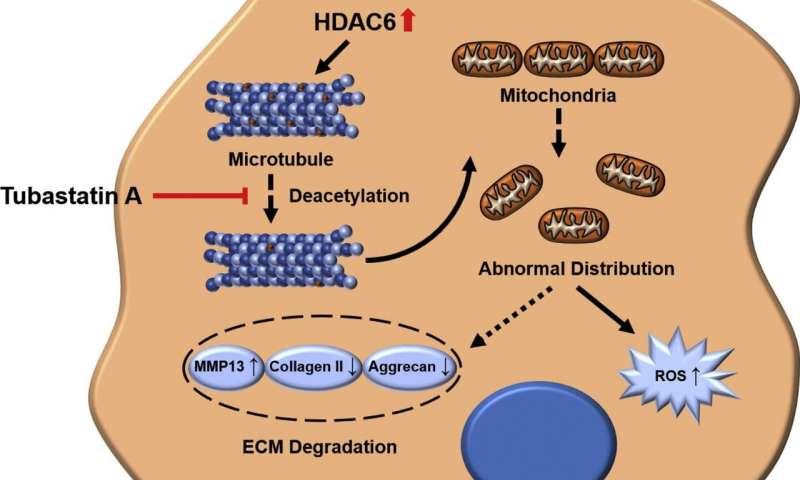
Osteoarthritis (OA), a widely acknowledged cause of disability that affects patients’ quality of life and has significant economic impact through healthcare costs and loss of earnings. In a novel study researchers have identified cytoplasmic localized histone deacetalyse 6 (HDAC6) as a promising therapeutic target to postpone development of and possibly treat OA using the HDAC6 inhibitor Tubastatin A. They report their results in The American Journal of Pathology.
“Because chondrocytes are the only resident cells in articular cartilage, the steady state of these cells is important to maintain joint function,” explained lead investigator Weiyang Gao, MD, Department of Hand and Plastic Surgery, The Second Affiliated Hospital and Yuying Children’s Hospital of Wenzhou Medical University, Wenzhou, Zhejiang, PR China. “In various OA diseases, chondrocytes undergo a series of pathophysiologic changes, leading to the loss of chondrocytes, which can impair mitochondrial function and extracellular matrix synthesis (ECM) to promote the progression of OA.”
Investigators detected the variations in expression level of HDAC6 after destabilization of the medial meniscus (DMM)-induced mouse OA model. They dissected the knee cartilage tissue of two-week-old mice to obtain primary chondrocytes. HDAC6 was up-regulated after OA and peaked at four weeks post-DMM. Thus, they constructed primary chondrocytes overexpressing HDAC6 by transfection of plasmid.
Their results indicate that overexpression of HDAC6 causes mitochondrial dysfunction and promotes reactive oxygen species production, leading to ECM degradation. However, the administration of the selective HDAC6 inhibitor Tubastatin A reversed the effect caused by HDAC6 overexpression in vitro and further postponed the progression of OA in vivo by ameliorating the degradation of cartilage and improving the microenvironment and function of the joint, suggesting that HDAC6 may be a target for delaying and managing OA with Tubastatin A.
“To our knowledge this is the first study to show that the expression level of HDAC6 is up-regulated in chondrocytes during the OA process and that the up-regulated expression of HDAC6 is associated with mitochondrial disfunction and ECM degradation,” commented Dr. Gao. “Our results show that HDAC6 is a potential target for treatment of OA and supports the administration of Tubastatin A to treat OA.”
Source: Read Full Article
